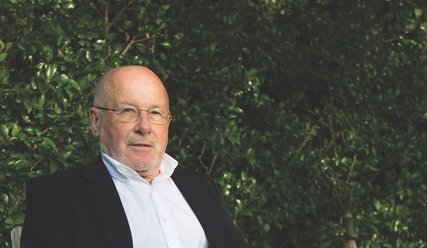HDC case - adenoid tumour
The Health and Disability Commissioner has released a decision on a case involving a delay in the diagnosis of an adenoid cystic carcinoma in a 50-year-old male.
For those of us who have not had a lot of experience with this type of malignancy, it is rare and although it can occur in many sites, it is usually found in the salivary glands.
The case history
Mr A visited his doctor in February 2021 because of a lump in his neck. He said it had been there for about a year and was getting bigger and had become tender over the previous three months. He also complained of difficulty swallowing liquids. Doctor B’s notes described it as “1.5 by 1cm, tender, movable submandibular gland with no overlying skin changes.”
Dr B recorded that Mr A’s eyes, ears, nose and throat were normal, that he was a smoker and had poor dentition, and there were no abscesses. She stated that in her opinion it was not unusual for lymph nodes to be enlarged in patients “due to dental or sinus or ear drainage”. She gave Mr A anti-inflammatories and asked him to return in two to four weeks for review, or earlier if symptoms worsened.
Mr A did not return within the four weeks as requested. Instead, he returned some six and a half months later on 5 August 2021. We can infer from that that his symptoms had not progressed much. Dr B noted Mr A’s explanation that he had had a sore tooth for about a month and was expressing fluid/blood from the gum. She also recorded that there was no change in his submandibular gland. She prescribed antibiotics and advised dental hygiene along with suggesting a referral to a dental surgeon.
Some time after that consultation, Mr A went overseas and the next contact was in May 2022 by an email to the practice advising them that he had been diagnosed with an adenoid cystic carcinoma. He subsequently had surgery overseas which involved removal of all of his teeth and part of his lung. His clinician(s) advised him that he had three to five years to live and if he had been diagnosed 12 months earlier, he would not have had to have his teeth and lung removed.
Dr B explained that she thought she had made a reasonable provisional diagnosis on each occasion but in hindsight realised she was wrong.”
Red flags
Unfortunately, there were two red flags. Firstly, that he had had the lump for at least a year and secondly, he did complain of difficulty swallowing liquids. Dr B explained that she thought she had made a reasonable provisional diagnosis on each occasion but in hindsight realised she was wrong.
It is important to note that the patient did not return for follow-up after the first consultation as requested, but this was not regarded as a mitigating factor.
The Commissioner referenced a Health Pathway guideline stating that a lump in the neck present for more than 3 weeks should be referred urgently to an ENT surgeon. In essence, a guideline becomes a protocol if it is not followed, and something then goes wrong.
What if
It is interesting to surmise how this case would have turned out if an “urgent” referral to the ENT department had been made without specifying a possible cancer. ENT departments appear to be chronically understaffed and if this “urgent” referral was downgraded when triaged and the patient had to wait some months, who would be blamed for the delay?
One further twist to this decision was that Dr B was a foreign graduate and had only been in the country for two weeks when the first consultation occurred. The Commissioner explored in some detail whether the practice had adequately inducted her into the clinic. No fault was found in this area, but it important to realise that with any breach the practice will come under scrutiny as well as the individual doctor.
